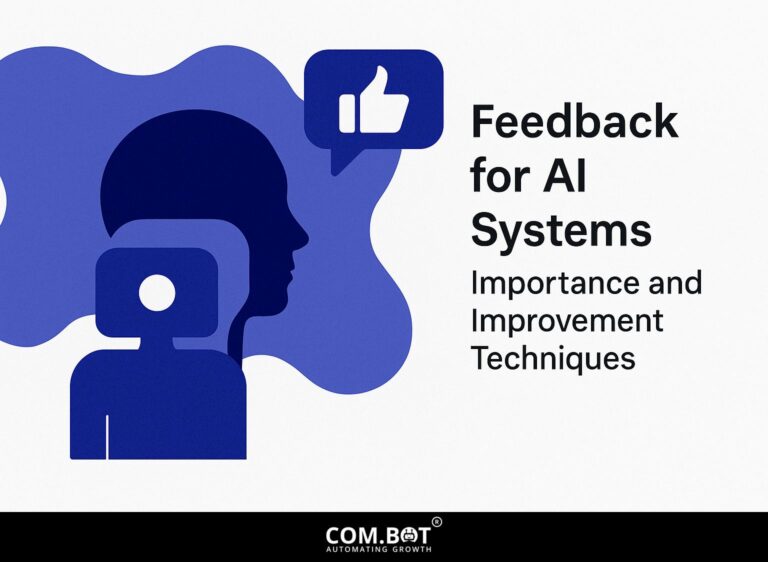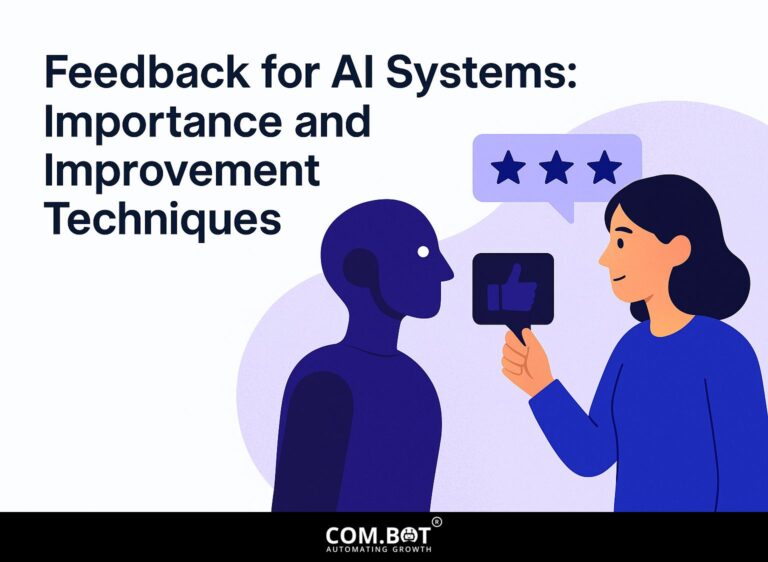Feedback for AI Systems: Importance and Improvement Techniques
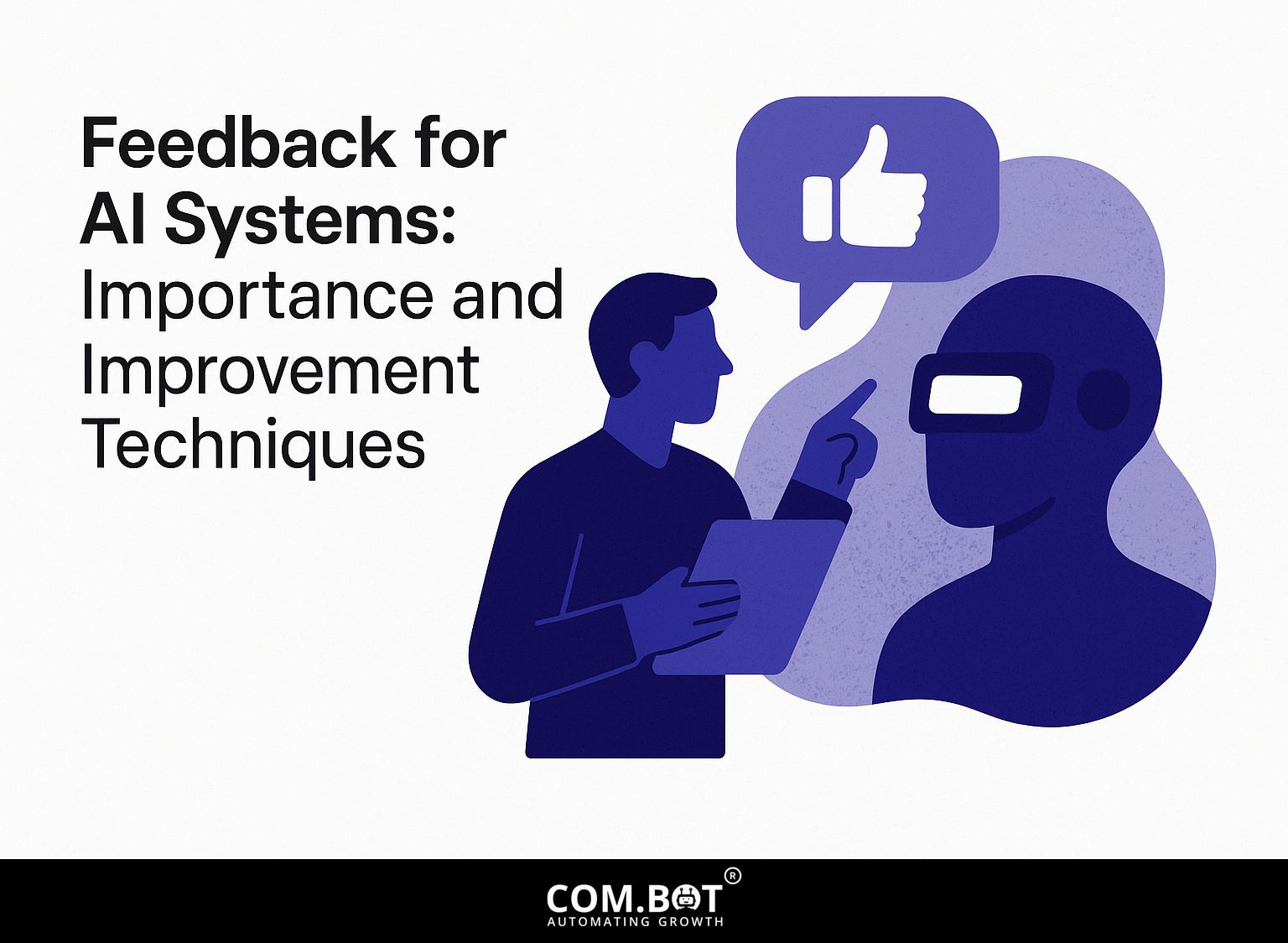
Today, AI systems play a big role in everyday life, so giving good feedback is important for them to work well. Watching how well systems perform using user responses and automated feedback helps improve machine learning, making sure these systems grow to match user needs. This article looks into the importance of feedback for AI systems, discussing ways to make them better and its role in developing them ethically. Learn how to use feedback to improve AI performance and user experience.
Key Takeaways:
- 1 Importance of Feedback
- 2 AI Feedback Impact Statistics
- 3 Types of Feedback Mechanisms
- 4 Techniques for Gathering Feedback
- 5 Implementing Feedback Loops
- 6 Challenges in Feedback Implementation
- 7 Frequently Asked Questions
- 7.1 What is the importance of feedback for AI systems?
- 7.2 How does feedback impact the overall performance of AI systems?
- 7.3 What are some techniques to improve feedback for AI systems?
- 7.4 Can feedback help prevent bias in AI systems?
- 7.5 Why should we include human feedback in AI systems?
- 7.6 How can feedback be used to continuously improve AI systems?
Definition and Scope
Feedback is information used to improve AI performance, including both numbers and opinions from users and systems.
Collecting feedback can be achieved through various methods:
- Surveys
- User tests
- Performance metrics
For instance, using tools like Google Forms for surveys allows you to quantify user satisfaction. A/B testing can help evaluate changes in algorithms by comparing outcomes from different user groups.
Feedback helps make machine learning models better. Adjusting settings based on user actions makes AI systems more accurate and useful.
Adding feedback from users gives additional information that mere numbers might overlook, improving AI’s learning process.
Role of Feedback in AI Development
In AI development, feedback helps to improve algorithms and adjust to user interactions, which leads to better performance metrics.
Real-time user interactions offer helpful information that guides developers in modifying algorithms. For example, using user ratings from chatbots can show which responses are most effective, helping teams adjust language models as needed.
Keeping track of engagement numbers, such as how long users stay and how quickly they reply, can point out areas needing improvement. Utilizing tools such as Google Analytics and user feedback platforms helps collect this data effectively (our deep dive into feedback improvement techniques for AI systems provides further insights).
Using A/B testing lets you compare different versions of algorithms, clearly showing which changes increase user satisfaction and performance.
Importance of Feedback
Feedback is important in AI systems because it makes models more accurate, improves user experience, and supports ethical AI practices. This approach aligns with the principles outlined in our analysis of Feedback for AI Systems: Importance and Improvement Techniques.
AI Feedback Impact Statistics
AI Feedback Impact Statistics
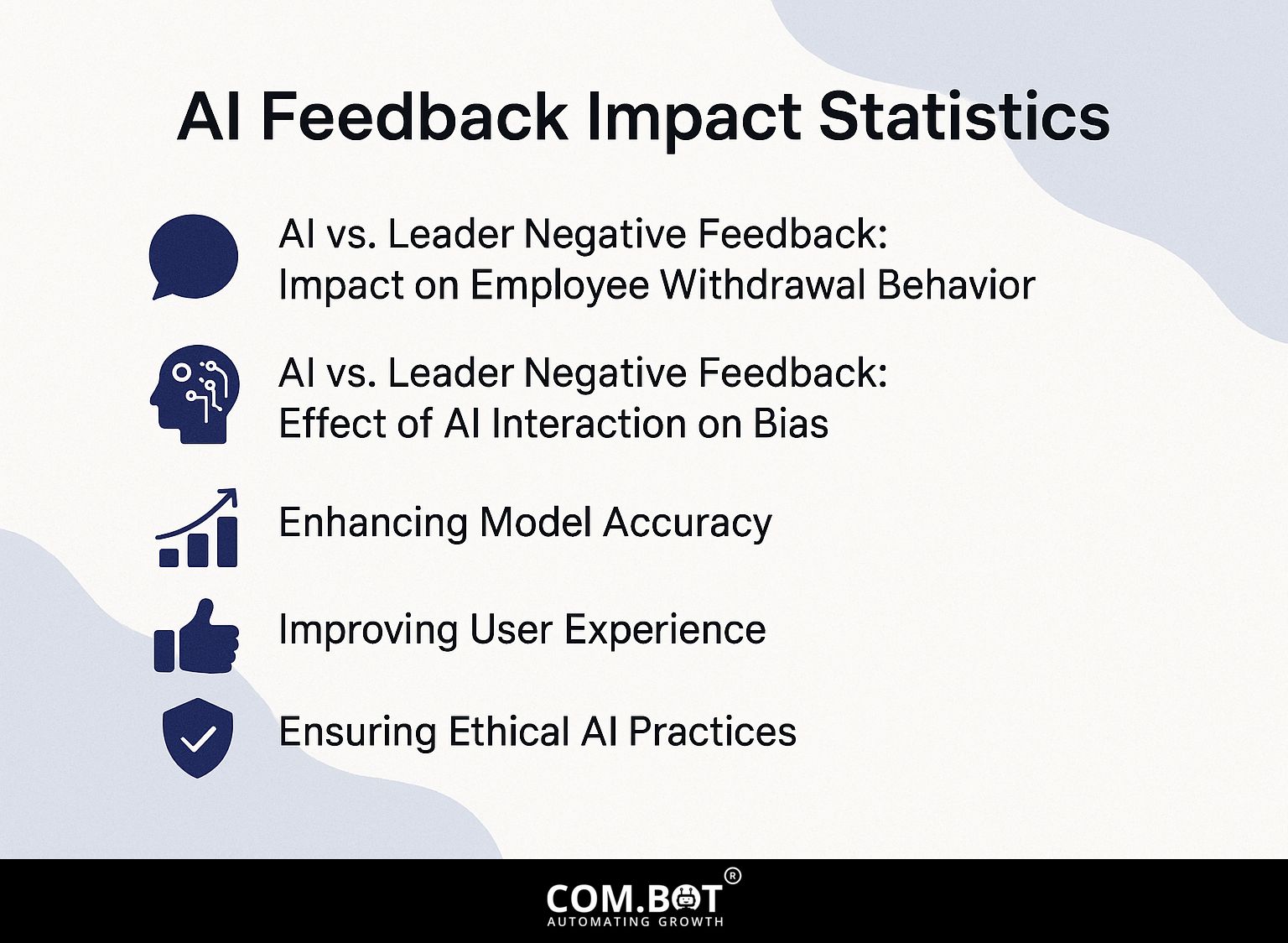
AI vs. Leader Negative Feedback: Impact on Employee Withdrawal Behavior
AI vs. Leader Negative Feedback: Effect of AI Interaction on Bias
The AI Feedback Impact Statistics explains the differences between feedback given by AI and feedback given by leaders, focusing on how each affects employee actions and biases. Grasping these dynamics is essential for organizations using AI tools in performance management and employee interactions.
AI vs. Leader Negative Feedback data highlights distinct psychological impacts. AI negative feedback affects self-efficacy by 38.6%, suggesting that employees may perceive AI feedback as less personal and therefore less damaging to their confidence. This suggests that feedback from AI may not influence self-view as strongly, but it could be better received when giving criticism without lowering employee confidence.
In contrast, leader negative feedback impacts shame by 56.7%, indicating a higher emotional response. Comments from human leaders might be more impactful because of relationships and social interactions at work. This suggests that leader-delivered negative feedback, while sometimes necessary, should be handled with sensitivity to mitigate feelings of shame that could lead to withdrawal behaviors.
Effect of AI Interaction on Bias reveals significant findings. Human-AI interaction amplifies bias by 65.33%, compared to 54.8% in human-human interactions. This suggests that AI systems, if not carefully monitored and corrected, might inadvertently reinforce existing biases at a higher rate than personal interactions between people. This requires careful management in AI system design and use to find and reduce biases, making sure employees are treated fairly and equally.
The data shows that AI feedback might feel less harmful to someone’s confidence, but it can increase biases more than feedback from people. Organizations should use AI carefully in feedback processes, ensuring people are involved and aware to create a positive and fair workplace.
Enhancing Model Accuracy
Regular feedback can increase model accuracy by up to 30%, particularly through reinforcement learning techniques that adjust based on real-time outcomes.
Organizations like Google and Netflix exemplify successful integration of user feedback. Google uses how users interact with search results to improve its search algorithms, which affects how relevant the results are.
Netflix looks at what viewers like to watch and changes content recommendations, raising user satisfaction scores by more than 20%. Creating a feedback loop means recording how users interact, studying patterns with software like Google Analytics or Mixpanel, and consistently adjusting the model based on these findings. For detailed insights into these techniques, consider exploring our hidden gem on feedback for AI systems, which delves into importance and improvement strategies.
This process improves the accuracy of the model and helps build user confidence and involvement.
Improving User Experience
Incorporating user feedback into AI systems can improve user experience scores by 20%, leading to higher satisfaction and retention rates.
To gather user feedback effectively, consider using tools like SurveyMonkey or Typeform for structured surveys, allowing you to ask specific questions on user satisfaction.
Use platforms like UserVoice to automatically gather feedback, enabling users to give suggestions instantly.
Analyze case studies, such as a leading e-commerce site that saw a 30% increase in user retention after integrating user feedback into its AI algorithms.
By regularly improving your method using this feedback, you can create a product that grows with what users need.
Ensuring Ethical AI Practices
Feedback systems are important for keeping AI use ethical, as they help find biases in models and make sure there is responsibility.
Organizations can use specific feedback systems to improve AI ethics. The Ethical Risk Assessment (ERA) process finds possible biases during development by including input from different stakeholders.
Human feedback plays a critical role as well; utilizing tools like AI Fairness 360, teams can regularly evaluate AI outputs against ethical standards. Setting up ongoing feedback systems lets users point out problems, helping improve algorithms. For those interested in how these feedback mechanisms can be enhanced, our insights on improving AI systems through feedback techniques provide valuable techniques and considerations.
This step-by-step method helps organizations build AI systems that match societal values more effectively.
Types of Feedback Mechanisms
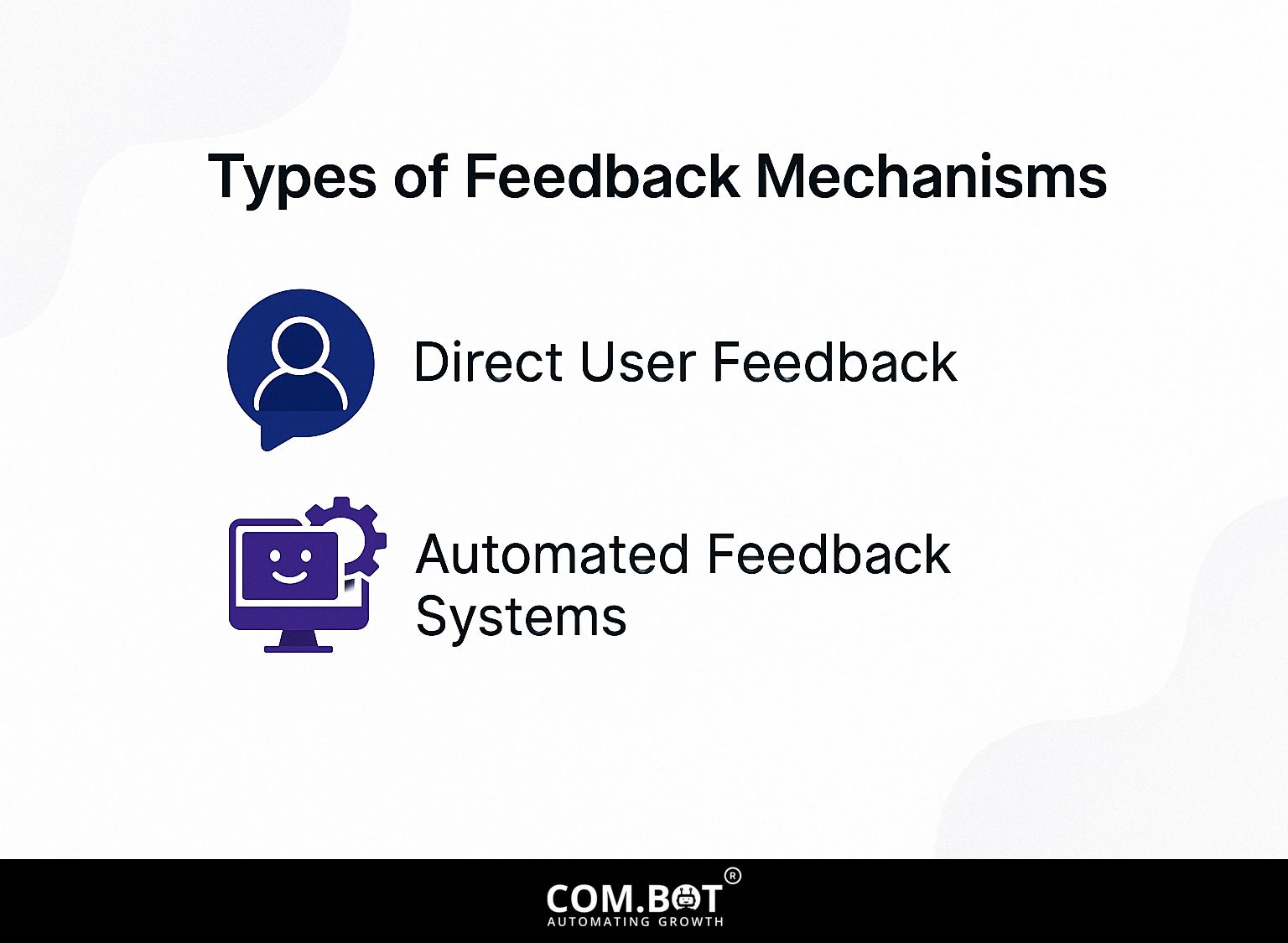
Knowing the various types of feedback systems is important for creating AI systems that meet user needs effectively.
Direct User Feedback
Comments from users, collected using tools like SurveyMonkey and Google Forms, give useful information about how happy users are and how well the system works.
By segmenting feedback into actionable categories-such as product performance, user experience, and feature requests-you can prioritize improvements effectively.
If users say that finding their way around is difficult, start by improving that part. Using Excel or Google Sheets to compile and analyze feedback trends can reveal common issues over time.
Regularly gather feedback by sending email surveys after a purchase or while customers are getting started. This method deals with current issues and encourages ongoing progress in your organization.
Automated Feedback Systems
Systems that use machine learning can automatically check how users interact and give quick feedback for improvement.
These systems track user engagement metrics like click-through rates and time spent on content.
Tools like Google Analytics and Hotjar have strong features for examining this data. For instance, Google Analytics can reveal busy times for your content, enabling you to adjust your publishing schedule for maximum impact.
Hotjar’s heatmaps show where users focus most on your site, allowing you to improve layout and content positioning.
Applying this information can greatly improve user experience and reduce biases in content sharing.
Techniques for Gathering Feedback
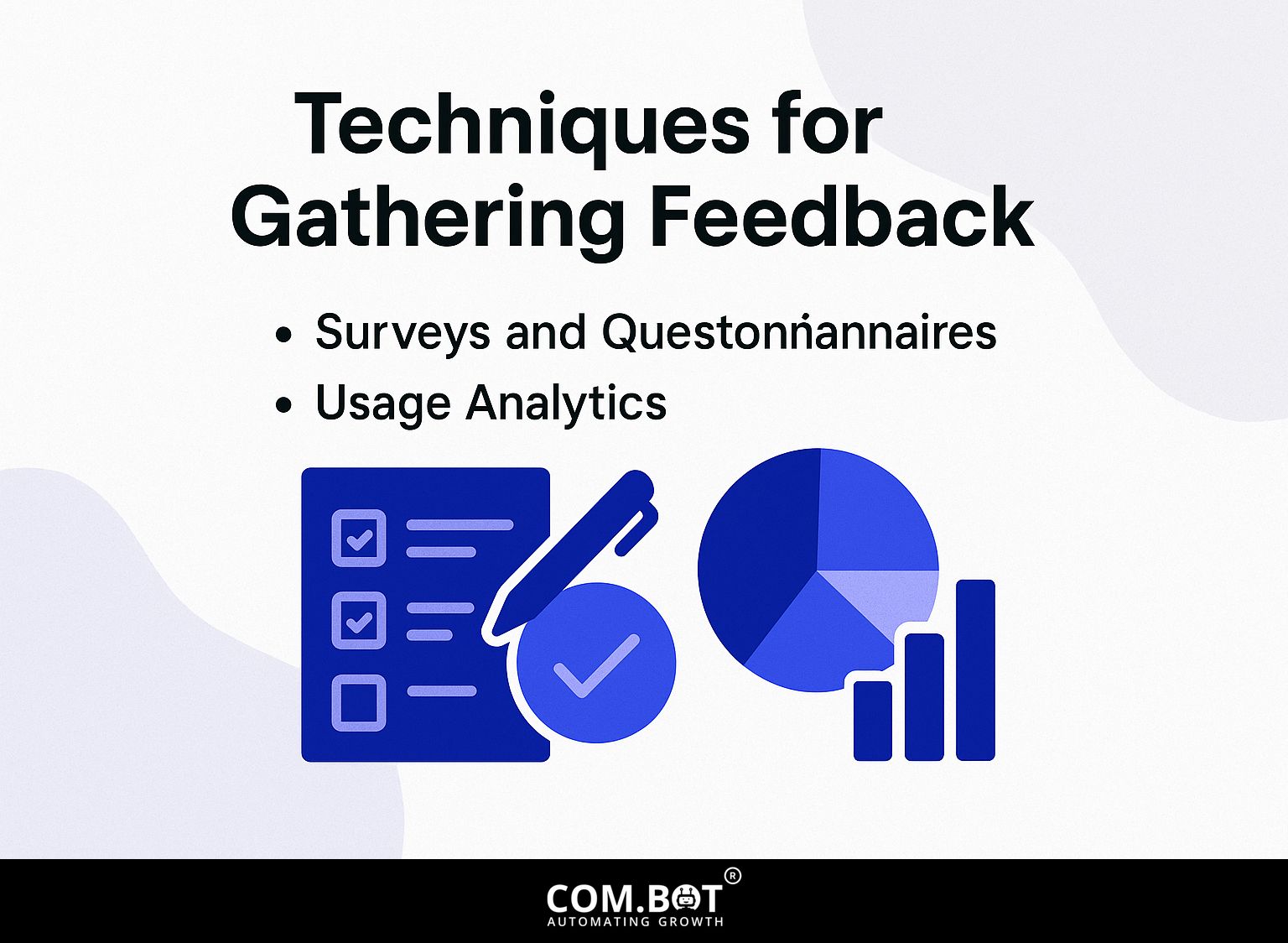
Receiving useful comments is important for making AI better. This can be done through surveys and studying how users interact with the system to understand their thoughts.
Surveys and Questionnaires
Surveys and questionnaires can get response rates up to 30% when done right, making them a key way to collect user feedback.
To design effective surveys, consider using a mix of closed and open-ended questions. Closed questions give measurable answers, while open-ended ones give more detailed information.
Platforms like SurveyMonkey and Google Forms can make the creation process easier. After collecting responses, analyze the data through cross-tabulation to identify patterns, or use sentiment analysis tools to gauge feelings.
For useful information, pay attention to important numbers-such as Net Promoter Score (NPS)-and look at the responses from various groups of people. This will help you adjust your services or products to better meet what users need.
Usage Analytics
Utilizing tools like Google Analytics or Mixpanel allows organizations to track user behavior and interactions, providing essential data for refining AI systems.
To set up usage analytics effectively, start by defining key performance metrics, such as user sessions, bounce rate, and conversion rate. For example, in a customer service AI, monitor how often users interact with the bot and the success rate of issue resolutions.
Next, implement event tracking to capture specific actions, like button clicks or form submissions. Regularly check dashboards to find patterns and places to make better, supporting a method focused on data that improves how users interact and makes AI work better over time.
Implementing Feedback Loops
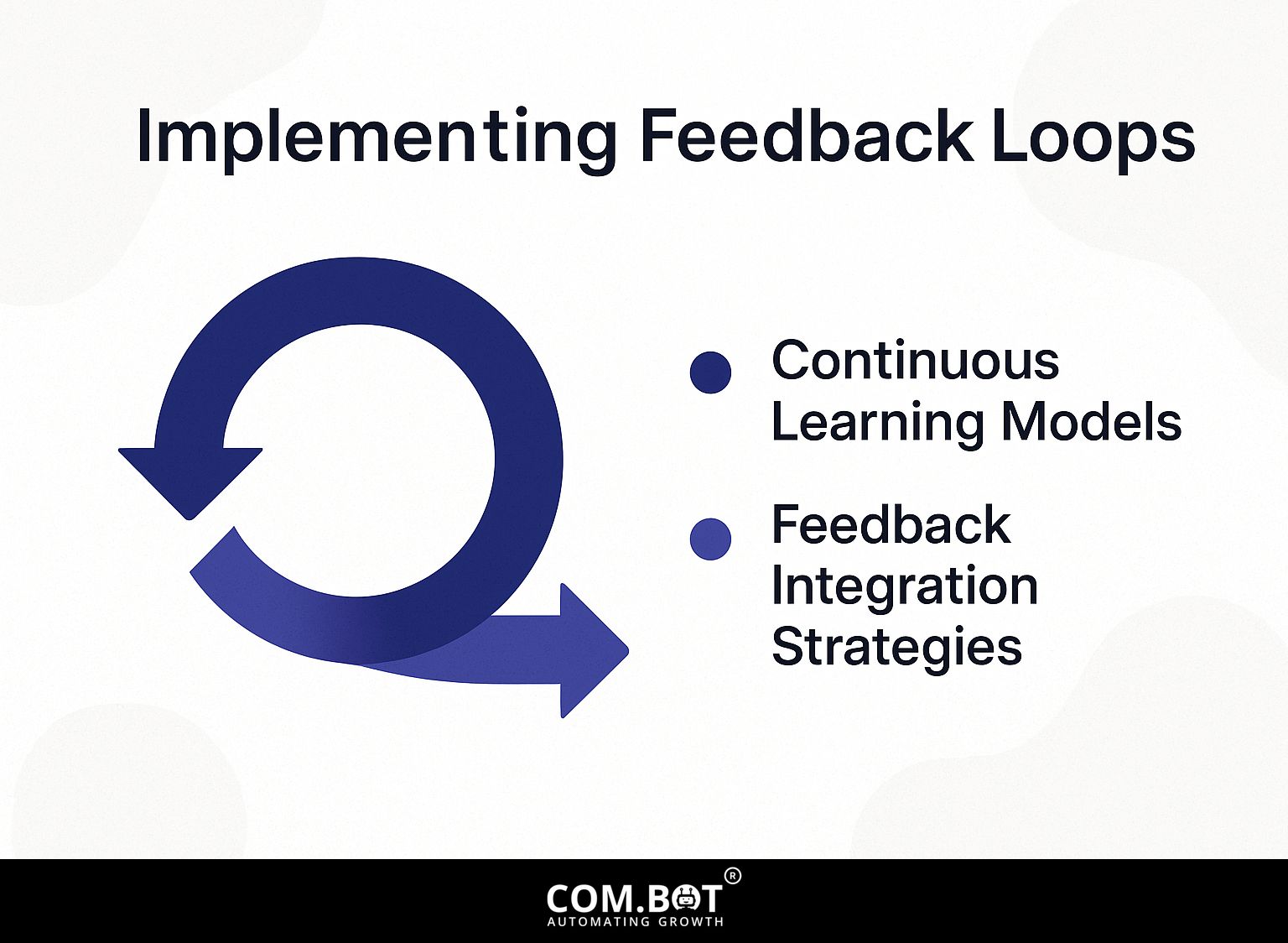
Using feedback loops helps AI models keep improving over time, allowing them to meet changing user needs and conditions.
Continuous Learning Models
Continuous learning models enable AI systems to change and get better as they receive feedback, which helps them make better decisions.
Companies such as Google and Amazon use ongoing learning to improve their suggestion systems. Google uses reinforcement learning to adjust ad placements by analyzing user interactions and making quick changes to target ads more effectively.
To implement a similar model, companies can adopt tools like TensorFlow for building neural networks, or MLflow for managing the machine learning lifecycle.
Businesses can improve their AI by regularly using performance data from real situations. This helps create better solutions as time goes on.
Feedback Integration Strategies
Integrating feedback effectively requires strategic planning, often employing techniques like A/B testing to assess user interactions and outcomes.
By implementing A/B testing, you can measure how users respond to different versions of your AI system. For example, test two variations of an interface-one with a more simplified layout and another with additional features.
Analyze metrics such as user engagement time and conversion rates to determine the more successful design. Tools like Google Optimize let you perform A/B tests, sort users into different groups, and gather information about particular modifications.
Set up regular sessions to gather feedback from users and improve your system using their real-time comments.
Challenges in Feedback Implementation
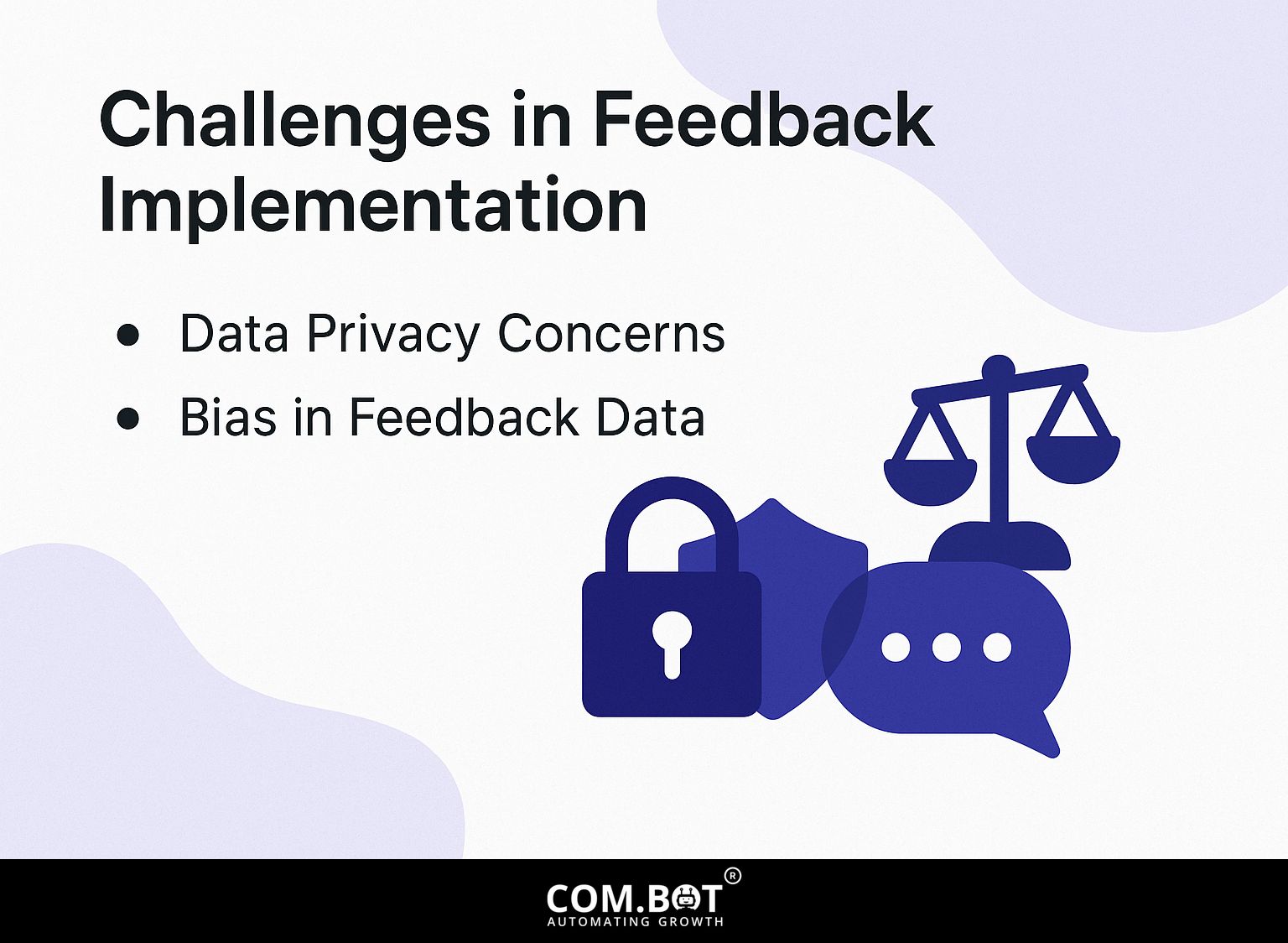
Adding feedback systems in AI can be tricky and may prevent the expected benefits and results. For a comprehensive understanding of how to overcome these challenges, consider exploring our expert analysis on Feedback for AI Systems: Importance and Improvement Techniques.
Data Privacy Concerns
Data privacy concerns can significantly impede the collection of user feedback, with organizations facing compliance risks under regulations like GDPR.
To handle these challenges, organizations should follow some effective methods.
- Begin by anonymizing feedback to remove personally identifiable information (PII), utilizing tools like Typeform or SurveyMonkey, which offer built-in privacy features.
- Next, clearly explain how you use data by refreshing your privacy policy and letting users know what they can do with their data.
- Consider data minimization; collect only the information necessary for your objectives.
- Regularly review privacy practices to confirm rules are followed and identify ways to make them better, building trust and responsibility.
Bias in Feedback Data
Bias in feedback data can skew the training of AI models, leading to inequitable outcomes and compromising ethical AI practices.
To mitigate these biases, consider implementing diverse user input methodologies.
- Start by recruiting a varied participant pool, ensuring representation across demographics, including age, gender, and socioeconomic status.
- Use tools like SurveyMonkey to gather opinions from many people.
- Perform an analysis to detect bias patterns using platforms such as IBM Watson.
- Regularly look over and change how you gather data. Use regular feedback loops to keep improving it.
By considering moral issues and gathering different opinions, you can make AI training data more trustworthy and equal.
Frequently Asked Questions
What is the importance of feedback for AI systems?
Feedback is important for AI systems because it helps them learn, change, and get better at what they do. The system can identify and correct errors or unfairness in its decisions, leading to more accurate and reliable results.
How does feedback impact the overall performance of AI systems?
Giving useful feedback can greatly improve how AI systems work by helping them make better and quicker decisions. Without feedback, AI systems may continue to make the same mistakes and fail to learn and improve.
What are some techniques to improve feedback for AI systems?
Some methods to make feedback better for AI systems involve using varied and fair data sets, adding human supervision and control, and frequently updating and retraining the system to handle new situations and problems.
Can feedback help prevent bias in AI systems?
Yes, feedback can help identify and correct any biases in AI systems. By regularly checking and examining feedback, developers can make sure the system avoids unfair decisions and can correct any possible biases.
Why should we include human feedback in AI systems?
Getting input from people is important for AI systems because it offers a unique viewpoint and can find mistakes or prejudices the system might overlook. It also allows for a more ethical and responsible approach to AI development and implementation.
How can feedback be used to continuously improve AI systems?
Feedback can be used to continuously train and improve AI systems, as it provides real-time information on the system’s performance and areas for improvement. Regularly using feedback can improve the accuracy and efficiency of AI systems.
